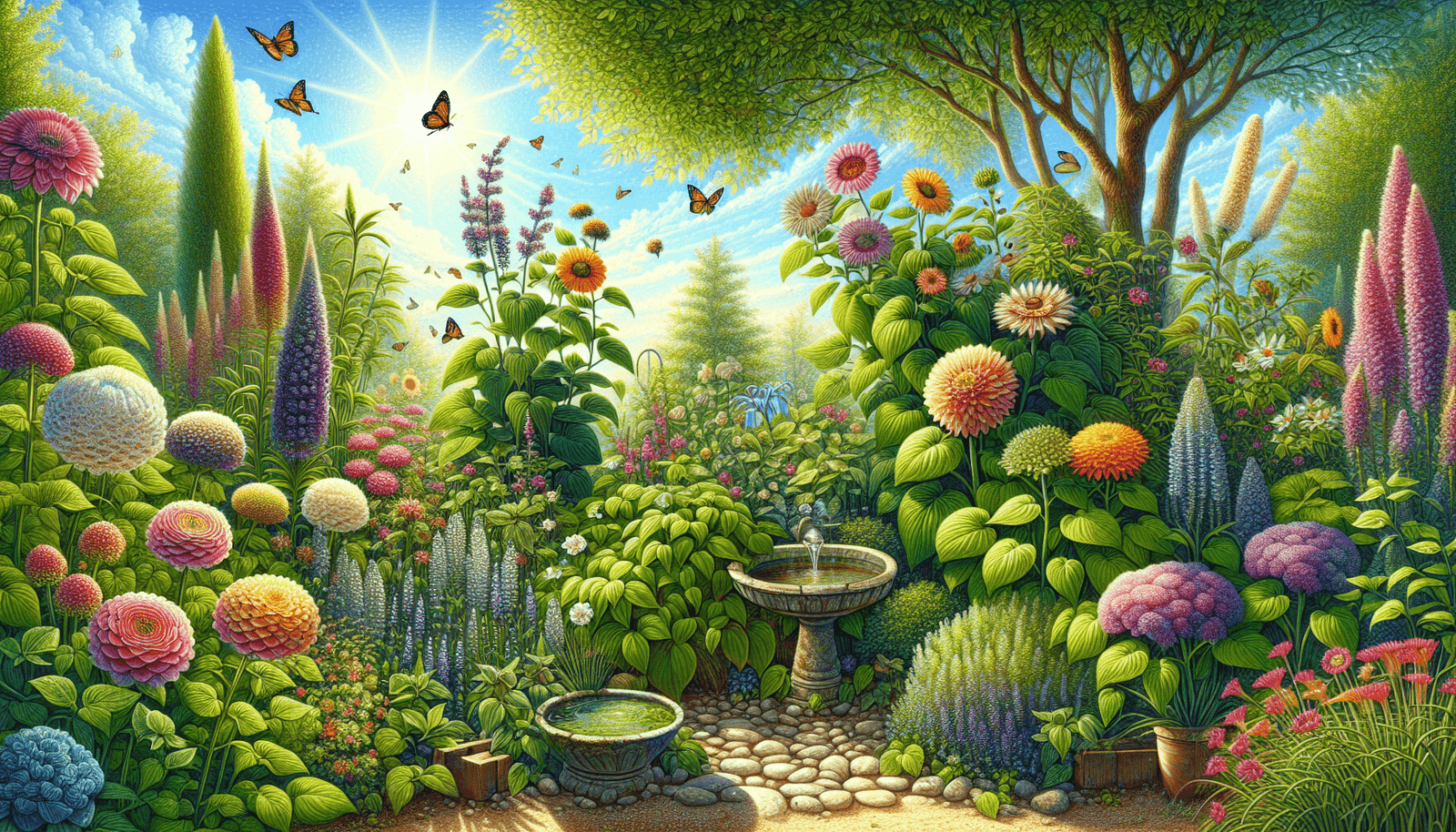You’ve always dreamed of cultivating your own garden, but where do you start? Whether you’re a seasoned gardener or a beginner, understanding the basic requirements for a successful garden is essential. From providing adequate sunlight to ensuring proper soil quality, there are several key elements that contribute to the thriving growth of your plants. In this article, we’ll explore the fundamental necessity that every garden must have, setting you on the path to green-thumb success. So grab your gardening tools and let’s dig in!
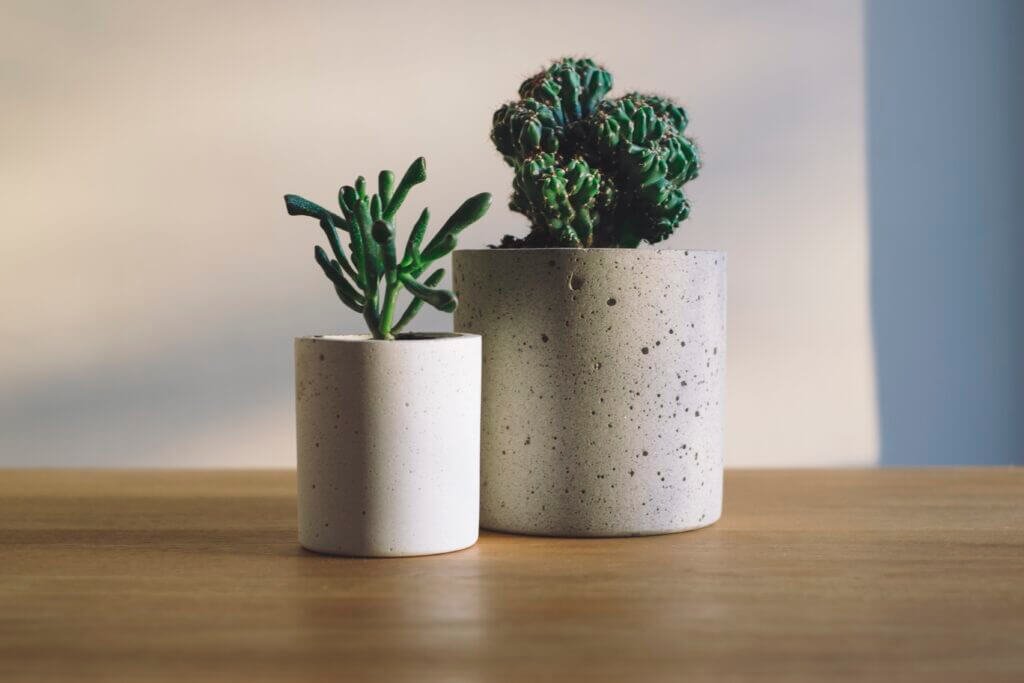
Soil
Type of soil
Choosing the right type of soil is crucial for the success of your garden. There are three main types of soil: sandy, clay, and loam. Sandy soil is well-draining but may have difficulty retaining nutrients. Clay soil, on the other hand, retains water but can become compacted. Loam soil is the ideal choice as it has a balanced mixture of sand, silt, and clay, providing good drainage as well as nutrient retention.
Soil preparation
Before you start planting, it’s important to prepare your soil properly. Begin by removing any weeds or grass from the area. Loosen the soil with a garden fork or tiller, breaking up any large clumps. You can also add organic matter such as compost or well-rotted manure to improve the soil structure and fertility. This will provide a healthy environment for your plants to grow.
Soil testing
Testing your soil is an essential step to determine its pH level and nutrient content. You can easily purchase a soil testing kit from a garden center or send a sample to a professional lab for analysis. The pH level of the soil affects the availability of nutrients to your plants, so it’s important to adjust it if necessary. Additionally, knowing the nutrient levels in your soil will help you determine the appropriate fertilizers to use.
Sunlight
Requirements of different plants
Different plants have varying sunlight requirements. Some thrive in full sun, while others prefer partial shade or even full shade. It’s important to understand the needs of your plants to ensure they receive the right amount of sunlight. Most seed packets or plant labels will provide information on the ideal sunlight conditions for each plant. Make sure to group plants with similar sunlight requirements together for optimal growth.
Positioning of garden
The positioning of your garden plays a crucial role in determining the amount of sunlight it receives. Evaluate your landscape and identify areas that receive the most sunlight throughout the day. For plants that require full sun, choose a location that receives at least six hours of direct sunlight. Partial shade plants can be placed in areas that receive four to six hours of sunlight, while full shade plants should be positioned where they’ll receive less than four hours of direct sunlight.
Shade options
If your garden lacks areas with sufficient shade, you can create shade options using various methods. One option is to install shade cloth or netting to partially block the sun’s rays. This can be especially beneficial for delicate plants that require protection from intense sunlight. Another option is to place potted plants strategically to provide shade for other plants. Additionally, you can utilize structures like pergolas or trellises to create shade for certain areas of your garden.
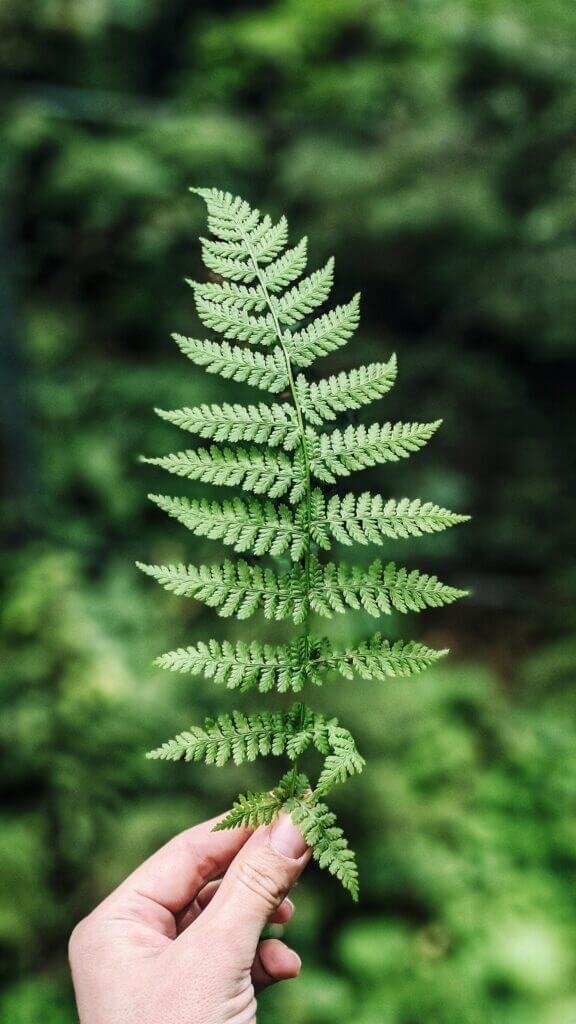
Water
Irrigation systems
Having a reliable irrigation system is essential to ensure your plants receive adequate water. There are several types of irrigation systems to choose from, including sprinklers, drip irrigation, and soaker hoses. Sprinklers are ideal for large areas as they provide a wide coverage, but they may not be efficient in water usage. Drip irrigation and soaker hoses are more water-efficient options, as they deliver water directly to the plant’s root system.
Watering schedule
Establishing a regular watering schedule is crucial for promoting healthy plant growth. The frequency and duration of watering will vary depending on factors such as weather conditions, plant type, and soil moisture levels. As a general rule, it’s best to water your garden deeply but infrequently, encouraging deep root growth. This can be achieved by providing a thorough soaking rather than frequent shallow watering.
Rainwater harvesting
Consider implementing a rainwater harvesting system to conserve water and reduce your reliance on municipal water sources. Rain barrels or cisterns can be placed beneath downspouts to collect rainwater from your roof. This collected water can then be used to irrigate your garden during drier periods. Implementing rainwater harvesting not only benefits your garden but also helps in water conservation efforts.
Fencing and Protection
Types of garden fences
Installing a garden fence is essential for protecting your plants from unwanted visitors. There are various types of garden fences to choose from, depending on your specific needs. Some popular options include picket fences, chain-link fences, and privacy fences. Picket fences add a decorative touch to your garden while still providing some protection. Chain-link fences offer durability and security, while privacy fences provide complete privacy and protection from animals.
Pest control measures
Implementing effective pest control measures is crucial to protect your plants from pests. Identify common garden pests in your area and take necessary precautions to prevent infestations. This can include using natural repellents, such as companion planting or introducing beneficial insects. Additionally, regular inspections of your plants can help identify and address pest issues before they escalate.
Physical protection for plants
In addition to fences and pest control measures, physical protection for your plants can be beneficial. This can include using wire mesh or netting to create barriers around vulnerable plants. Such barriers can deter animals like rabbits or birds from damaging your plants. Additionally, installing stakes or supports for taller plants can prevent them from toppling over during strong winds or heavy rains.

Tools and Equipment
Basic gardening tools
To maintain your garden effectively, it’s essential to have the right tools on hand. Some basic gardening tools include a trowel, hand pruners, a rake, a hoe, and a shovel. These tools will help you with tasks such as digging, planting, weeding, and pruning. Invest in high-quality tools to ensure durability and ease of use.
Garden machinery
For larger gardens, garden machinery can be a time-saving investment. Consider purchasing a lawnmower, a garden tiller, or a leaf blower to help with maintenance tasks. These machines can significantly reduce the effort required to keep your garden in good shape. However, it’s important to familiarize yourself with their operation and safety guidelines to prevent accidents.
Safety equipment
When working in the garden, it’s important to prioritize safety. Wear protective gear such as gloves, goggles, and sturdy shoes to prevent injuries. Additionally, keep sharp tools properly stored and out of reach of children. Being mindful of safety precautions will ensure an enjoyable and accident-free gardening experience.
Plant Selection
Native vs. non-native plants
Choosing between native and non-native plants is an important decision when designing your garden. Native plants are adapted to the local climate, soil conditions, and wildlife, making them more likely to thrive in your garden. They also play an important role in supporting local ecosystems. Non-native plants, while often visually appealing, may require more maintenance and may not provide the same ecological benefits.
Choosing plants for the region
Consider the climate and hardiness zone of your region when selecting plants for your garden. Different plants have specific temperature and growing requirements. Research plants that are well-suited to your region’s conditions, such as heat-tolerant plants for hotter climates or cold-hardy plants for colder regions. This will increase the likelihood of success and minimize the need for excessive maintenance.
Companion planting
Companion planting involves strategically grouping plants that have mutually beneficial relationships. Some plants repel pests, while others attract beneficial insects or help improve soil fertility. For example, planting marigolds alongside vegetable crops can deter pests, while planting herbs like basil or rosemary near tomatoes can enhance their flavor. Research companion planting combinations to create a healthy and thriving garden ecosystem.
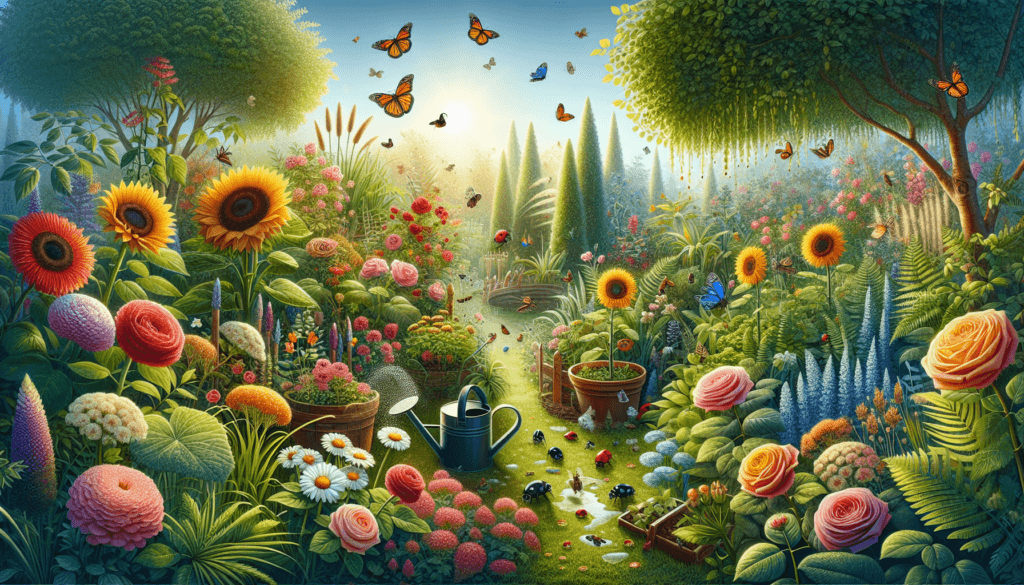
Planting and Maintenance
Timing of planting
The timing of planting plays a significant role in the success of your garden. Different plants have specific planting times based on regional climate and average frost dates. Consult planting guides or local gardening resources to determine the ideal planting window for various plants. Planting at the right time ensures that your plants have optimal growing conditions and minimizes the risk of damage from extreme weather.
Spacing and depth
Proper spacing and planting depth are essential factors to consider when planting your garden. Each plant has specific requirements for spacing between plants to allow for optimal growth and airflow. Pay attention to spacing guidelines provided on seed packets or plant labels. Planting depth is equally important, as it determines the stability and establishment of your plants. Make sure to dig the appropriate hole depth and gently firm the soil around the roots.
Weeding and pruning
Regular weeding is essential for maintaining a healthy and visually appealing garden. Weeds compete with your plants for nutrients and water, so it’s important to remove them promptly. Use a hand tool or a hoe to carefully remove weeds, making sure to get the entire root system. Additionally, pruning helps shape and maintain the health of your plants. Remove dead or diseased branches and trim back overgrown areas when necessary.
Fertilizers
Organic vs. synthetic fertilizers
Choosing between organic and synthetic fertilizers is a personal choice based on your gardening preferences. Organic fertilizers are derived from natural materials and provide slow-release nutrients to plants. They improve soil structure and promote microbial activity. Synthetic fertilizers, on the other hand, are manufactured and provide a quick-release of nutrients. They can be more precise in nutrient content but may have adverse environmental impacts if used improperly.
Application techniques
When applying fertilizers, it’s important to follow the recommended application techniques for the specific product. This includes applying the appropriate amount, avoiding contact with the plant foliage, and watering the fertilizer into the soil after application. Overuse of fertilizers can lead to nutrient imbalances and harm your plants, while underuse may result in nutrient deficiencies. Read the instructions carefully and apply fertilizers accordingly.
Soil amendments
In addition to fertilizers, incorporating soil amendments can be beneficial to enhance soil fertility and structure. Organic matter such as compost, aged manure, or leaf mold can improve nutrient retention, water-holding capacity, and soil structure. Before adding amendments, consider conducting a soil test to identify any specific deficiencies or imbalances that need to be addressed. This will help you select the appropriate amendments for your soil.
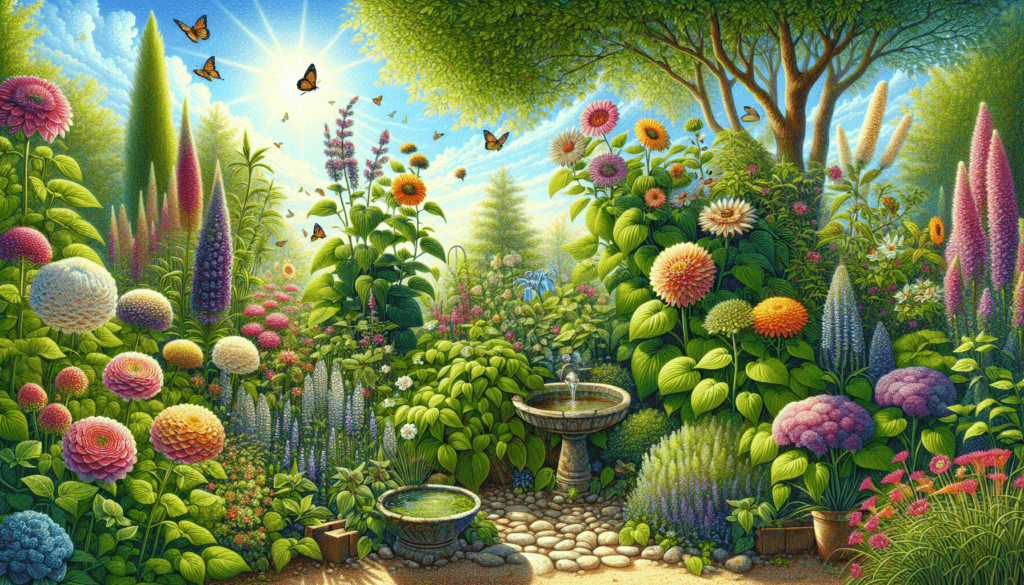
Disease and Pest Control
Identification of common garden diseases
Garden diseases can pose a threat to the health and productivity of your plants. It’s important to familiarize yourself with common garden diseases in your region and learn to identify their symptoms. Common diseases include fungal infections, bacterial infections, and viral infections. Prompt identification allows for early intervention and treatment to minimize the spread and impact of diseases.
Integrated pest management
Integrated Pest Management (IPM) is an effective approach to control pests while minimizing the use of harmful chemicals. IPM involves a combination of preventative measures, monitoring, and targeted interventions. This approach focuses on cultural practices such as proper plant spacing, regular inspection, and using physical barriers to deter pests. Chemical pesticides should only be used as a last resort when other non-chemical control methods have failed.
Natural pest control methods
Implementing natural pest control methods can help maintain a healthy balance in your garden ecosystem. This includes attracting beneficial insects such as ladybugs or lacewings, which feed on harmful pests. Planting flowers, such as marigolds or lavender, can also repel pests naturally. Additionally, employing physical traps or using organic pest control sprays can help control pests without harmful chemical exposure.
Landscape Design
Garden layout and structure
Planning the layout and structure of your garden is essential for creating an aesthetically pleasing and functional space. Consider the size and shape of your garden, as well as the location of existing elements such as trees or structures. Create pathways or borders to define different areas and provide easy access. Incorporate focal points, such as statues or water features, to add visual interest. Experiment with different layouts until you find one that suits your preferences and needs.
Color schemes and flower combinations
Selecting a color scheme and coordinating flower combinations can enhance the visual appeal of your garden. Consider the colors of your home or surrounding landscape when choosing a color scheme. Harmonious color combinations can create a cohesive and calming atmosphere, while contrasting colors can add excitement and energy. Experiment with different flower combinations to create stunning displays throughout the seasons.
Hardscaping elements
In addition to plants, hardscaping elements can add structure and functionality to your garden. This can include features like patios, decks, pergolas, or pathways. Choose materials that complement your overall garden design and select durable options that can withstand the elements. Incorporating hardscaping elements not only adds visual interest but also provides areas for relaxation, dining, or entertaining.
By considering the specific requirements of your soil, sunlight, water, fencing and protection, tools and equipment, plant selection, planting and maintenance, fertilizers, disease and pest control, and landscape design, you are well on your way to creating a thriving and beautiful garden. Remember to adapt these guidelines to your specific region and gardening style, and don’t be afraid to experiment and learn from your gardening experiences. Happy gardening!

